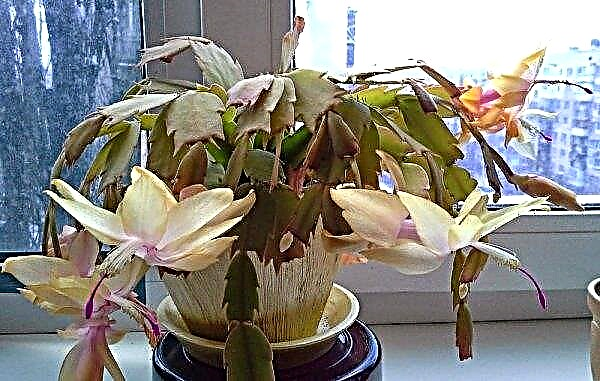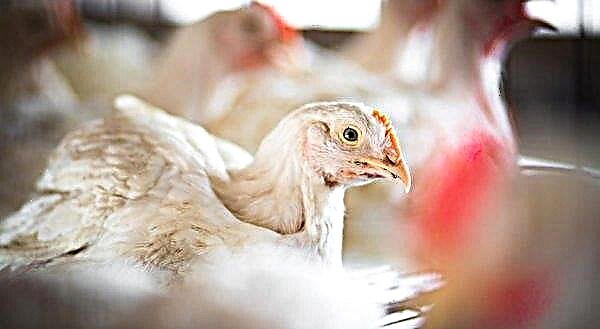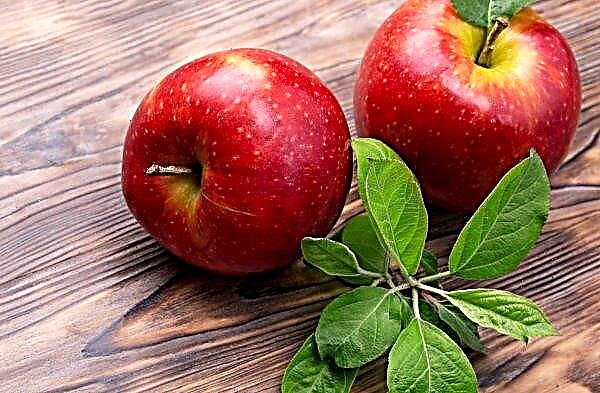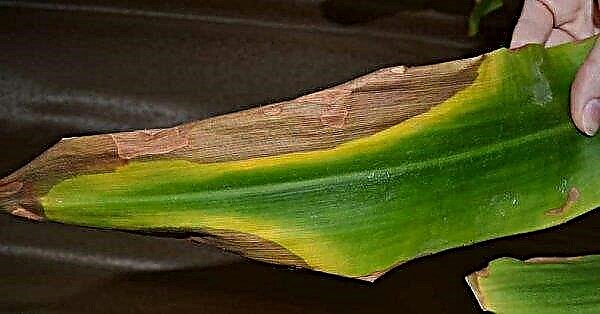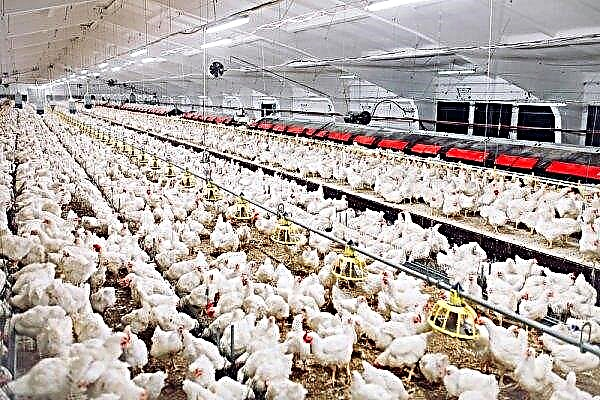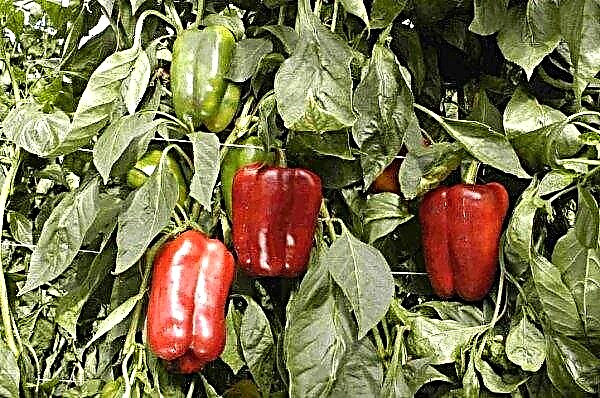Carrots are included in the diet of every person and are grown in almost every compound. On top of that, varietal diversity allows you to choose a species that meets a variety of requirements: by sowing date, shelf life or yield indicators. In today's article, we will focus on the variety Emperor, its features and growing technology.
Description and characteristics of the variety
Carrot Emperor - the result of the work of the staff of the selection center Gavrish, which is located in the Moscow and Tula regions. It was withdrawn in 2005, and a year later it was included in the State Register.
Did you know? The world capital of carrots is considered the American city of Holtville, which annually hosts a weekly weekly carrot festival in February.
Description of root crops
The plant has a semi-spreading rosette, which consists of long cirrus-dissected green leaves. Externally, the vegetable is cylindrical in shape with a blunt end and even edges. It grows to 25 cm in length and about 5 cm in volume, while its mass is in the range of 80-180 g. The root crop is dense, painted in a saturated orange color. The core is small, one tone with pulp. It has a sweet taste, as well as a pleasant aroma. Many vegetable growers choose this variety for the manufacture of various dishes and preparations. This carrot is great for making juices in the factory, as well as baby food
Many vegetable growers choose this variety for the manufacture of various dishes and preparations. This carrot is great for making juices in the factory, as well as baby food
Ripening time
The variety belongs to the group of late ripening. Technical ripeness occurs on the 120-135th day after the emergence of seedlings.
Did you know? During the storage of the harvest, the taste of the Emperor variety is significantly improved.
Productivity
Depending on the growing conditions, the yield indicator varies from 158 to 290 kg / ha, and the output of marketable products is 75–90%. On average, from 1 m² you can collect about 5.5 kg of vegetables.
Grade stability
Carrots do not form arrows with seeds, i.e. it is resistant to flowering. It is noted that the fruits do not crack.
Advantages and disadvantages of the variety
- The Emperor variety is appreciated for the following qualities:
- good taste and appearance of the fruit;
- high yield of marketable products;
- good keeping quality.
- The disadvantages include:
- exactingness to the composition of the soil;
- low germination rate.
Features of growing carrots Emperor
Before you start sowing a crop, it is important to familiarize yourself with the features of its cultivation.
Important! When planting in poorly dug up soil, carrots become clumsy, and “horns” are formed on it — side roots.
Optimal conditions for growth
Loamy and sandy soils are considered the best option for planting carrots. If chernozem is reserved for cultivating the variety, it is recommended to mulch the soil with sawdust and river sand in a ratio of 1: 1. For growing crops, temperate zones are well suited. The variety is recommended for cultivation in central Russia, as well as in Ukraine and Belarus. 
Landing time
Carrots are sown in the summer - at the beginning of July, while harvesting will occur in October. The Emperor variety is also suitable for sowing in the winter, for this, choose the period when the air temperature during the day is kept at + 2 ° C, while at night it does not fall below -5 ° C.
Did you know? Excessive consumption of carrots can give the skin a yellow-orange tint.
Choosing a place and preparing the garden
When choosing a site for planting carrots, it is important to consider what crops grew there before.
- Unfavorable precursors for growing this vegetable are:
- celery;
- beans;
- parsley;
- dill.
The above crops have common pests and also draw the same nutrients from the soil, so non-compliance with these recommendations will significantly reduce yield. Soil after potatoes is perfect for planting carrots. To get smooth and beautiful fruits, you need to make fertilizers and “fluff” the soil.
For this purpose, based on 1 m², use:
- 2 buckets of compost;
- 1 bucket of peat;
- 1 bucket of sand;
- 50 g nitrofoski.
Preparation and scheme of planting seeds
Before sowing, seeds are not processed, because they are produced in the form of dragees. On 10 m², about 4 g of planting material is needed. Before the procedure, the soil is abundantly watered (at a rate of 5 liters per 1 m²), so that the seed coat, which consists of a complex of mineral fertilizers, will quickly dissolve. After the water is absorbed, planting material is lowered into the grooves at a distance of about 1.5 cm and covered with earth. In order for the seedlings to appear faster, a film can be stretched over the bed at a height of 15 cm.
Video: how to sow carrots
Care Features
Timely watering, the introduction of nutrients into the soil, as well as the correct procedure for thinning the stands form the value of the yield indicator.
Important! For irrigation use water with a temperature not lower than + 10 ° C.
Watering
The amount of water consumed during irrigation directly depends on the age of the seedlings. So, the first 2 weeks the procedure is carried out 2 times a week, allocating 3-5 liters for each running meter. Further, the amount of liquid increases to 7–10 l, with the same multiplicity.
Fertilizer application
Considering that the seeds are released in a shell of mineral fertilizers, in the first month after sowing, fertilizing is not applied. Inorganic fertilizers are then used: nitrate substances are added at a rate of 120 kg / ha, and after 20 days - 80 kg / ha of phosphate top dressing.
Thinning
When the seedlings reach a height of 3 cm, thinning is carried out in such a way that a distance of 2 cm is formed between the plants. The next stage of the procedure occurs when the diameter of the vegetable reaches 1 cm. At this point, the distance is increased to 6 cm. In parallel with this event, weeding the beds.
Protection against diseases and pests
The Emperor variety is resistant to various diseases. However, there are cases of defeat following ailments:
- Cercosporosis - It is characterized by the presence of brown spots on the foliage, and the stems are affected by oblong ulcers, which are covered with a gray coating during wet weather. To prevent disease, it is important to adhere to crop rotation. In case of damage, the shoots are sprayed with a 1% solution of Bordeaux mixture.
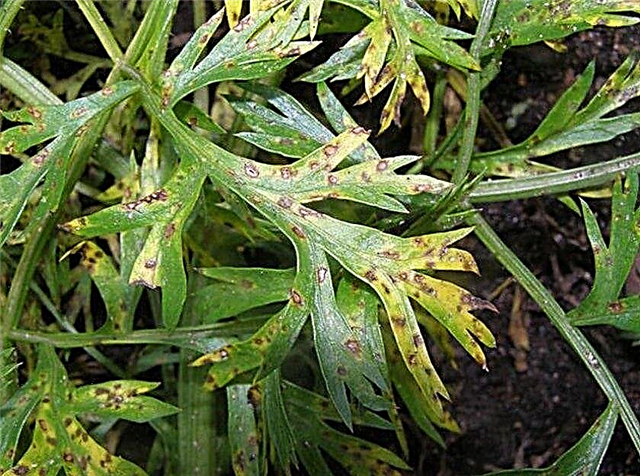
- Powdery mildew - a disease of fungal nature, manifested by white plaque on any part of the plant. Over time, the affected areas become stiff and crumble. To combat, use fungicides Beyleton, Skor, in accordance with the instructions, or prepare a solution (4 g of soda ash and 4 g of soap are dissolved in 1 liter of water), which are sprayed with plantings 2 times with an interval of 7 days.
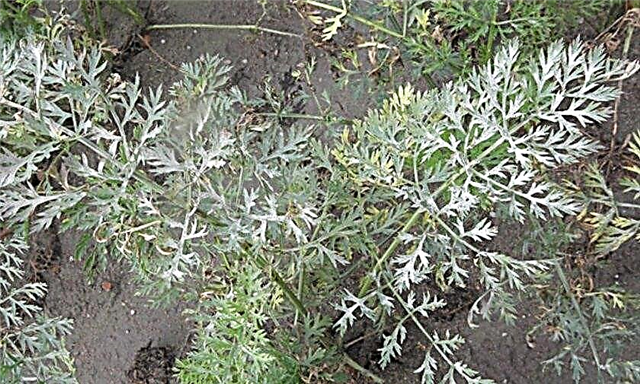
As for pests, this variety can affect wireworm, bear and carrot moth. The first two are fought with the help of soil pesticides, and a decoction of tomato shoots helps the carrot moth well.
Harvesting and Storage
Root crops are harvested in mid-October. The fruits are dug up and pulled by hand, after which the tops are cut at a distance of 3-5 cm from the base. The harvested crop is dried, placed in boxes and placed in conditions with a temperature of about + 5 ° C, where carrots can lie for up to 6 months.
Variety Emperor is an excellent choice for cultivation both on a farm and in a summer cottage. Carrot has a high taste, has a good presentation and is stored for about six months.



